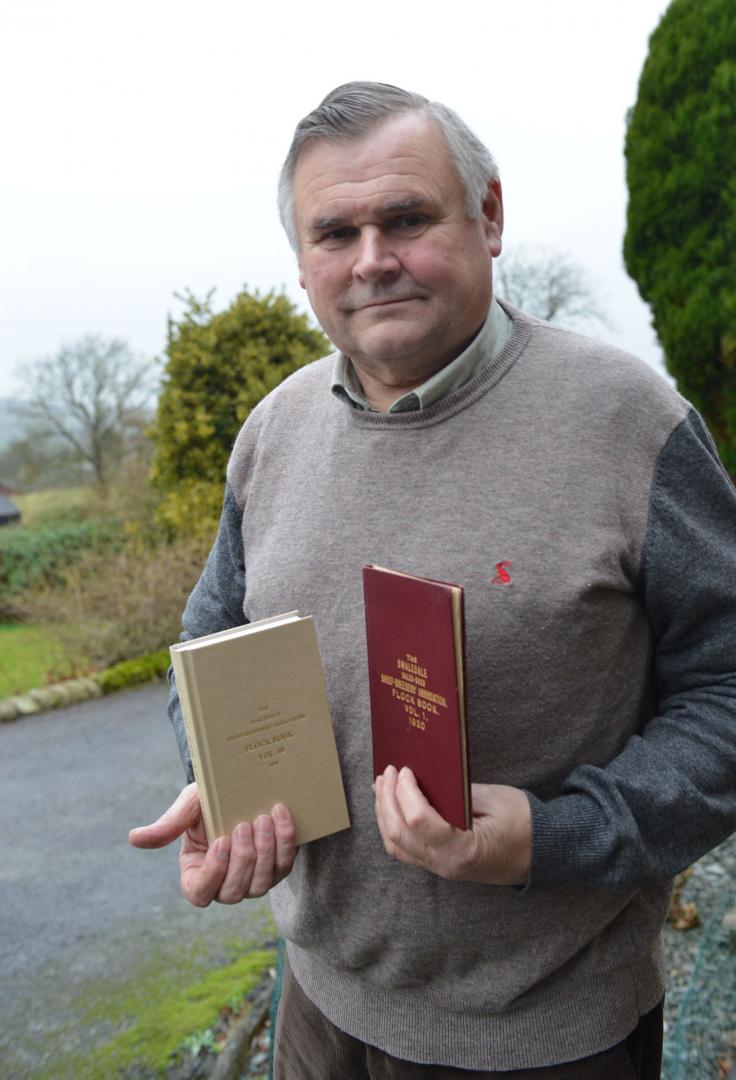WHEN the Swaledale Sheep Breeders Association celebrates its 100th anniversary with a major show and gala dinner this June, it will also be saying a sad farewell to one its stalwarts.
John Stephenson, whose family has been involved with the association since its inception in March 1920, will retire from his role as secretary on June 10.
It is a title he has held for the past 18 years, and continued a family tradition that began when his grandfather John William Stephenson was appointed to the executive in the first year of the association. It was known as the Swaledale Dales Bred Sheep Association at the time.
Later, his father Eric served as district secretary and his uncle Fred as vice-chairman.
As sad as Mr Stephenson’s departure may be, June will be an exciting time for the association with two major functions to mark the centenary.
The first, on June 7, will be a Swaledale Super Sunday at the Junction 36 Livestock Centre, in Kendal.
Mr Stephenson said: “We are having breed shows for each of the five districts, with a show of all the districts at the end.
“Along with the normal classes, there will be Swaledale ewe with two lambs, Swaledale ewe with two mule lambs and Swaledale ewe with two lambs any other breed.”
There will also be two categories for young handlers, one for under 11s and another for those aged 11 to 16.
A feature of the day will be a Celebrity Ready, Steady, Cook event which will pit the district chairman and association chairman’s lamb cooking skills against each other.
There will also be running commentary throughout the day, and, as with other shows, there will be a wealth of trade stands to visit.
Mr Stephenson said: “It is going to be all action.”
The celebrations will culminate with a gala dinner at Shap Wells Hotel, on Saturday, June 13, where former Highlands Show chairman Jimmy Warnock will be one of the speakers.
Mr Stephenson’s retirement will herald another milestone in the association’s history as it takes on its first lady secretary in form of Rachel Buckle, from Shap.
Of his time as secretary Mr Stephenson said: “There isn’t a job you like all the time, but the majority of the time I really enjoyed it and made some good friends out of it.”
When, on May 10, 1920, the Swaledale Dales Bred Sheep Association was formed it had 159 members on its books.
A century later, there are about 1,100 registered breeders in five districts across the North Pennines.
The popularity of the breed is down to its qualities, according to Mr Stephenson.
He explained: “They were bred because they survived on the terrain and produced viable lambs. They are good mothers, good grazers and very hardy.”
Initially, he said, the Swaledale was crossed with the Teeswater to create a Masham sheep, but, when wool prices dropped, this was superseded by crossing the Swaledale with Blue-faced Leicester to produce a Mule.
It proved to be a boon for the association as interest in the Swaledale breed increased.
Mr Stephenson said: “It expanded a lot in the 1970s on the back of the popularity of the North of England Mule. There is nothing easier to look after than a Mule ewe. They are good mothers, easy to look after and produce two lambs.”
At its peak the association had 1,400 members on its books. Mr Stephenson attributes the drop since then to “farm amalgamations and sheep being take off the hills for various reasons” .
The growth of the breed also saw its districts change, and from the initial A, B and C areas covering Teeesdale, Swaledale and Kirkby Stephen respectively, the A district was split up at various times to form D district in Weardale, and E district for North Yorkshire.
In recent times the association has noted an increase in demand for the breed throughout the UK and, particularly in Ireland.
In previous years between 50 and 60 Swaledales were being sold to breeders in Ireland.
Mr Stephenson said: “This year has taken off. We have 154 going off next week.”
Speaking on the judging of Swaledale sheep, and what sets the champions apart, Mr Stephenson said: “It is like asking what is the perfect sheep – there isn’t one because everyone has a different view. There is a breed standard, after that it is personal preference.
“It is everyone’s aim to breed ‘The Sheep’ – it is what keeps the job going.”
So, if it is personal preference, why do some shepherds pay £20,000 for particular Swaledale?
The secretary answers: “When you buy a sheep like that you are buying the blood and the breeding, and what you hope will improve your stock.”






